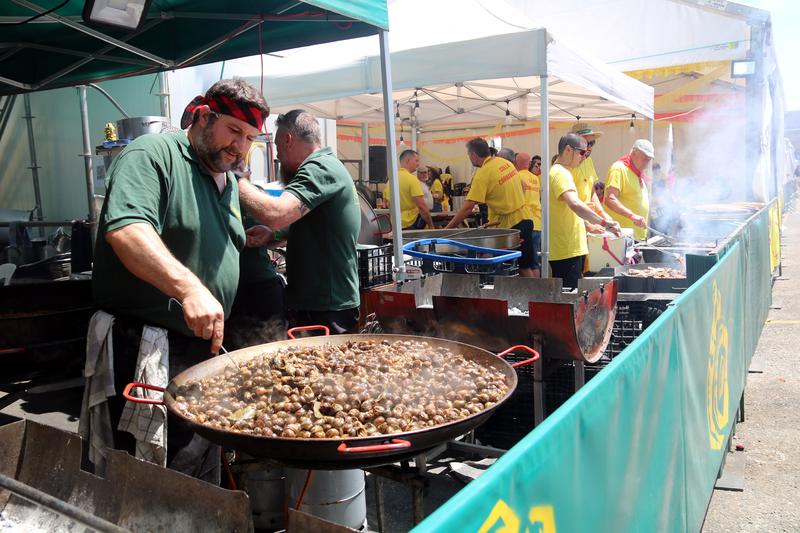Lleida's Aplec del Caragol: the world's largest snail-eating festival
Thousands gather in western Catalan city every year to eat snails

Every year since 1980, at the end of May, the western Catalan city of Lleida hosts the world's largest snail-eating festival: l'Aplec del Caragol.
This year, the 43rd edition attracted 200,000 people during the three-day festival. Snail eaters in Lleida consumed a whopping 15 tonnes of snails, with 9 tonnes consumed during the festival alone.
The 'aplecs', or gatherings, are outdoor events that originally had religious connotations. Today, they have evolved into folkloric celebrations and are held throughout the region. This particular aplec celebrates snails.
"It essentially is a gastronomic festival, but it is especially social. Because around a table, with food and drinks, you socialize, make friends, and live life," says Josep Maria, from Ordre del Caragol colla.
But it is not all about snails. Revellers also watch or participate in the comical contests for which the Aplec has become known. These often silly but entertaining contests include allioli making, long distance snail spitting, hard boiled egg eating, and rapid cava cork popping.
The most famous contest is the Canya Polvoró Canya, in which participants race to drink a beer, eat a polvoró (a traditional shortbread cookie), and then drink another beer.
Participants are organized into 'colles' (groups), usually made up of about a hundred members, and they cook, eat, and celebrate together for three days. This year there were 119 colles, a record number, with a total of 15,000 members.

Each colla often has a unique history, often linked to the workplace and reflecting the city's industrial landscape.
Josep, from Colla Piticlin, explains that his colla was formed in 1986 by workers from the telecom company Telefónica.
Nearly 40 years later, many of the original members are retired and some no longer participate, but their sons and friends still gather for the Aplec.
"We reunite with many people here. There are people we see only once a year, and it is here at the Aplec. In our colla, we are 215 members from all over Spain," he says.

The event is not just about eating snails; it offers a delicious three-day menu with a variety of dishes, most of which are traditional and many of which include snails or serve them as a side dish.
Some of the most popular dishes are paella and fideuà, as well as grilled meats, sausages and stews.
Although each colla has its own menu, most of them serve 'Cassola de tros' on Saturdays: a traditional casserole from the region, usually made with pork and other seasonal ingredients.
Sunday lunch is dedicated to snails with La Caragolada, where only snails are eaten, cooked in the traditional way of the region: 'Caragols a la llauna', named after the metal tray in which they are cooked.
Why do we eat snails?
Eating snails is very popular in many countries around the world and dates back to ancient times.
The earliest evidence of snail consumption can be found in archaeological sites in the Mediterranean region, particularly in ancient Roman and Greek cultures.
The Romans were known for their sophisticated snail farms and considered snails a delicacy. This tradition continued through the Middle Ages and into modern times.
In Catalonia, the tradition of eating snails is deeply rooted in the culture and cuisine of the region, with the Aplec being its most prominent expression.

Snail farming keeps tradition alive
Snails thrive under certain weather conditions, typically in the spring and early summer when the environment is moist and vegetation is abundant.
During the rainy season, snails are more abundant and accessible. In many places, it is traditional to collect snails after the rains and cook them in traditional recipes.
Three years of drought in Catalonia have drastically reduced the availability of wild snails. Fortunately, snail farming ensures a year-round supply.
"Last year we had some problems because of the drought; there was less local production. Now there is a stable market and snails are bred all year round. We have promoted the city's cuisine and suppliers are willing to bring snails from anywhere," explains Ferran Perdrix, president of Aplec.
This year, the main importers of snails to Aplec are from Croatia, Bulgaria, Spain, Morocco and Tunisia.
To learn more about the Aplec and snail eating, listen to the latest episode of our podcast Filling the Sink.